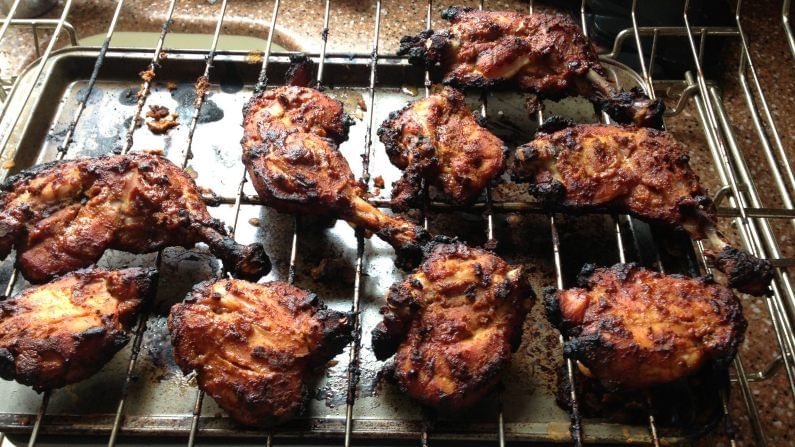Forbidden indulgences on World Environment Day
In the cities some of the nation’s most beloved items, tandoor chicken and kebabs, have been compromised due to environmental concerns
- Avijit Ghosal
- Last Updated : June 5, 2021, 18:00 IST

One of the forbidden indulgences on World Environment Day is tandoor items, the age-old passion of millions of Indians. Environmentalist hawks have destroyed peace of the tandoor-loving doves in many Indian cities by forcing a switch from coal-based ovens to electricity or gas-based ovens, hardly realising that the path to nirvana is paved more with taste buds and not with their agenda.
Only the most prosaic nonchalance of government babus can dare imagine diktats to be served on the Moti Mahal restaurant in Delhi’s Daryaganj or Peter Cat in Kolkata’s Park Street to stop using coal-fired tandoor ovens and switch to electricity or gas-based ovens, realising little that the guardians of the environment were turning out to be vandals of history and culture.
Krushchev enthralled
Delhi old-timers would recall that Soviet President Nikita Krushchev carried tandoori chicken from Moti Mahal restaurant back to Moscow after his trip in 1955. Tandoori chicken’s triumph in the west began with the Los Angeles Times publishing its recipe in 1963.
After all the ingredients – lime juice, salt, black salt, chilli powder, yogurt, garlic paste, ginger paste, garam masala, kasoori methi – are combined for the marinade for at four hours, the chicken legs and breasts are to be fixed on skewers and put deep into a coal-fired tandoori oven with frequent basting with white oil.
Peshawar to Delhi
If the oven is fired with anything else, it is always a poor second-best option.
Many believe that the tandoori chicken, in its present form, in just about as old as independence in India. Kundan Lal Gujral, began commercially offering it in a restaurant in Peshawar. After independence, he opened Moti Mahal where the item became a signature item, enthralling the first Prime Minister of India who almost turned into its brand ambassador.
Mohenjodaro
History teachers told us that circular ovens resembling the tandoor ovens to modern times were found in the ruins of Mohenjodaro, the civilisation every citizen of this subcontinent wears as a proof of their superior civilisation on their sleeves.
Those were big ovens with the firing section below the ground level. It takes only a little imagination to think that tandoor items might have been first prepared around that time – 2500 BC – making them India’s primary gastronomic legacy.
Kebabs and more
But even if it was born much later, from the wombs of imagination of any medieval chef, the chicken tandoor, or seekh kebab or the tandoori roti, are too treasured to be lost to the green brigade.
Seekh kebab, tangri kebab, hariyali tikka even rumali rotis – the muslin of the Indian kitchen – are best made on coal ovens.
Greenhouse gases
But burning coal, or charcoal, leads to emission of greenhouse gasses that pollute the environment.
The use of coal/charcoal lends that distinctive aroma to the meat that cannot be replicated by gas or electric. The aroma of charcoal-fired tandoor items wafting in the air constitute much of the persona of cities such as Kolkata and Delhi.
Chicken rolls
The best chicken rolls are always prepared using seekh kebabs in a coal-fired oven. When the first bite cuts through the crispy paratha and onion rings to reach kebab, the feeling is that of pure ecstasy. Chicken imbued with the flavour of charcoal is pure bliss. Anything else is a compromise.
Go green, but be happy too.
Download Money9 App for the latest updates on Personal Finance.

